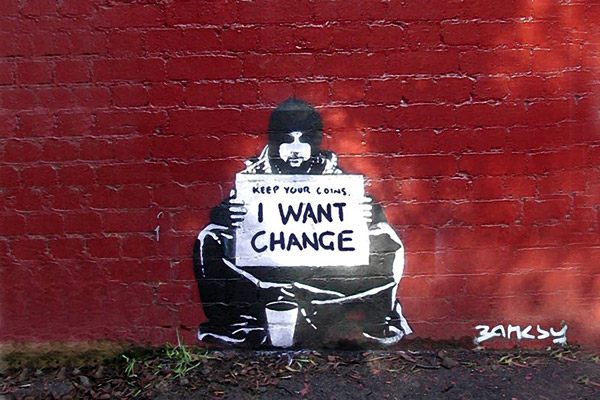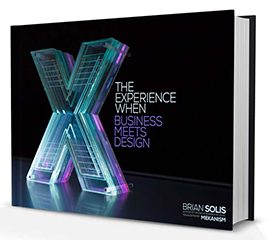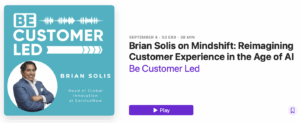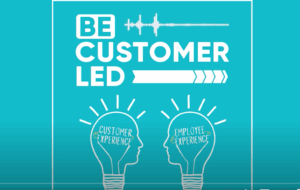The following discussion represents Part 2 of my conversation with Loyalty360 CEO and CMO Mark Johnson. In this last part of the series,
Change Starts with You
Altimeter Group’s Principal Analyst Brian Solis is dedicated to creating change within brands and bringing customer experience into the spotlight. The first step, Solis told Loyalty360 in a recent discussion, is to define the CX problem and use that to guide solutions. More specifically, he challenged businesses to rethink what CX really means across the entire customer journey and why they’re important to the future of business success.
“I think in order to truly define customer experience, we need to embrace the fact that customers are different now, significantly more so than previous generations.” Solis continued, “Because of the prevalence of digital media and always-on connected devices in their lives, they’ve completely upended what a customer journey really is. What was once a continuous journey through the shopping experience is now a series of micro-moments. In other words, to define CX we need to reframe the conversation to face challenges in a way that’s innovative rather than iterative.”
Solis defines iteration as “doing the same things better or different” and innovation as “doing new things that introduce new value.”
He believes the future of business is rooted in experience. Solis presents his findings and what to do moving forward in his new book, X: Where Business Meets Design. In order to create real innovation when faced with corporate inertia, Solis notes that brands need to be able to let go of old ways and shift the workplace culture to challenge convention and work in ways the collaborative and inventive.
Culture is the Catalyst or the Roadblock of Digital Transformation
“The truth is that no one wants to have the culture conversation,” said Solis. “They want everything tied to performance, because that’s a tangible metric they can use for comparison, but it’s very rare that we peel back layers to get to the core of why things are (or aren’t) happening. If morale is low, the question becomes: how can we talk about innovation if we can’t take care of the culture and the people responsible for it?”
The ability for company’s to disrupt their industry is determined not only by the company itself, but by its individual employees who are the ones providing CX on a daily basis.
Stepping further into this concept of employee engagement, organizations that have designated CX specialists must now go the extra mile to create a comprehensive customer experience plan across the entire company. This extra step, Solis says, is proving to be particularly difficult for some brands.
Customer experience is the sum of all engagements a customer has with your brand throughout the customer lifecycle. It’s not just one moment, it’s all moments combined. Design for that…
“In most cases, customer experience is driven by separate departments; they’re not collaborating with one another and by default, they’re contributing to a disjointed customer experience,” said Solis. “While each group may be striving to do its best, CX is measured by the sum of its parts. Without collaboration, it can never be truly connected and holistic. Customers don’t see departments, they see an individual brand. That is so important as a marketer, and that’s why we’re seeing so much disruption now as companies like Amazon and Uber provide customer experience in ways we’ve never seen before.”
Solving for the Engagement Gap
Companies often lose sight of where they stand in terms of customer and employee engagement, and this momentary loss of direction can snowball into a significant disconnect between employees and executive leadership.
“I call this ‘the engagement gap.’ When I’ve studied culture, I cast a company-wide survey about employee engagement practices.” Solis continued, “What I’ve found is that there’s a significant gap between where executives think employee engagement is, and where it is in reality. It’s a big eye-opener for companies that are investing in things like technology, journey mapping, and digital transformation, but aren’t thinking enough about the employee experience and getting people onboard and engaged to be genuine, empowered brand ambassadors.”
Simply throwing money at a CX problem, however, will not solve core issues like corporate alignment. Companies don’t change by accident: paradigm shifts are meticulously planned and executed according to organizational values and structure.
Without proper responsibility alignment, said Solis, too many CX opportunities will be squandered in a no-man’s land of overlapping roles.
“Most friction points fall within a grey area of responsibility. They occur when an issue falls into a space not completely covered by team responsibilities. I see this creating an opportunity for a new role within organizations that serves as a lynchpin for all experience-related concerns.”
Measure for Experience
Net Promoter Score has become both a blessing and a curse for companies looking to improve brand advocacy. On one hand, the metric provides a snapshot of how the company is performing in terms of customer engagement and satisfaction. The problem arises when these measurements become the be-all and end-all of CX discussion.
“Without saying anything negative about things like NPS, CSAT, etc., I will say this: I’ve definitely seen executives set goals based on these metrics simply because increasing these measurements look good to shareholders and stakeholders. They do this, however, without a complete understanding of today’s customer,” explained Solis. “With how connected we are becoming and how the journey, behavior, expectations, values, etc. are changing, the NPS could evolve from ‘Would you recommend us?’ to ‘Did you recommend us?’ The proliferation of social sharing or just the publishing of experiences online is changing the marketing landscape, and companies need to change the way they look at metrics and what it means to the new customer journey.”
Read Part 1: It’s Time To Change How Companies Perceive Customer Experience (CX)
Please read X, The Experience When Business Meets Design or visit my previous publications
Connect with Brian!
Twitter: @briansolis
Facebook: TheBrianSolis
LinkedIn: BrianSolis
Youtube: BrianSolisTV
Snapchat: BrianSolis
Invite him to speak at your next event or meeting.
About Mark Johnson
Mark is CEO & CMO of Loyalty360. He has significant experience in selling, designing and administering prepaid, loyalty/CRM programs, as well as data-driven marketing communication programs.







2 COMMENTS ON THIS POST To “CX Starts with Understanding Today’s Customer Experience, Then Designing Them To Be Amazing and Integrated”